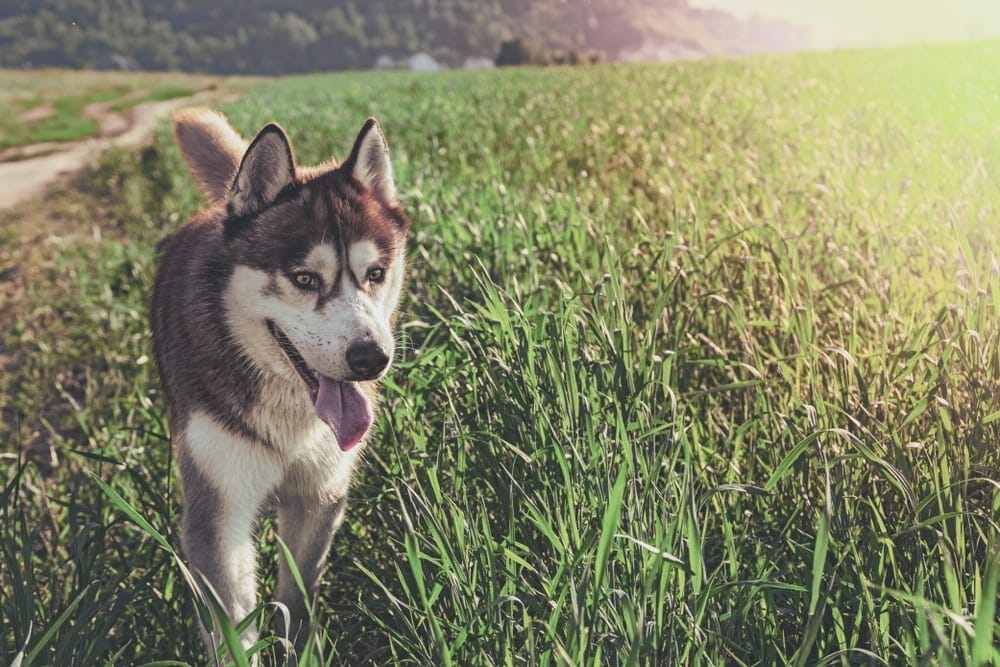What’s That All About – Face Staining
PIA Australia
November 6, 2018
Do you have a pooch that suffers from face staining? Pet Insurance Australia catches up with Brad Child, from Professional Pet Styling by Brad Child to get the rundown on what causes face staining and how you can help prevent this problem in your pet.
There are many breeds that will typically suffer from staining of the face at some stage during their lifetime. The most common breeds affected are:
- Bichon Frise
- Samoyed
- Maltese Terriers
- Poodles (all sizes)
- Husky
- Malamutes
- Shihtzu
However, any dog with a white face can suffer from this type of problem.
“Tear staining is most often an inherited issue cause by extreme narrowing or total blockage of the tear ducts causing excess tears to spill out the front of the eyes instead of over the back of the sinuses,” Brad Child from Professional Pet Styling says. “A vet may be able to sedate the pet and attempt to flush or unblock the tear ducts, but this procedure is rarely successful and even if it is the results are usually very short lived.”
In some cases, staining may be also be caused by the eye lashes curling into the eye and causing irritation, better known as entropia.
“For this reason; I always recommend having the pet checked by a vet before commencing any of the therapeutic remedies,” Brad suggests.
Once your pet has been checked by the vet and a clean bill of health has been issued there are some therapeutic options that have been shown to help with face staining. Like with many issues affecting our pets, their primary health is very important, and this includes a good quality diet.
“To assist with staining; I always recommend starting with a high-quality diet free from artificial colours as these will often contribute to the darkening of the staining,” Brad suggests. “Like with so many things a good quality diet says so much.”
Facial stains are usually caused by iron molecules known as porphyrins that are excreted by dogs through their tears and saliva. When it sits on white fur it can stain. Interestingly this can become worst when exposed to sunlight. The most prominent areas are around the eyes, nose and mouth of your beloved pet. If your dog is suffering from Epiphora or excessive tear production, it can also escalate the staining around the eyes.
Maintenance – it’s all about grooming
Keeping your pet free from face staining is all about maintenance and keeping your pet clean and well groomed.
“Regular maintenance is also important,” Brad says. “Keeping the face clean and dry and well groomed.”
Brad also recommends wiping the face once or twice per day with a saline solution and drying the area well. Be prepared with towels handy and wipe daily to prevent the staining occurring.
“Powdering the face with potato flour will help to mop up excess moisture and protect the coat.”
Other tips include;
- Keep the hair around the eyes and mouth trimmed.
- Tie long hair up away from the face and eyes.
- Consider offering your pet purified water.
- Good quality diet
- Patience.
- Professional grooming.
- Throw away the plastic bowls and only use porcelain, stainless steel or glass.
- Use potato flour.
- Consider adding natural products to your pet’s diet to help.
“For show animals we use a small amount of Vaseline over affected areas to totally protect the affect areas, but this is less athletically pleasing,” Brad says. “Many people claim to have had success by offering only purified water with a few drops of apple cider vinegar in it for the pet to drink or adding a small amount of mashed sweet potato or dried pineapple to the pet’s daily diet.”
With all face staining prevention is better than a cure and also being patient. The staining will not disappear overnight, and it will take additional maintenance and grooming to upkeep.
“There are two commercially prepared treatments available which are highly effective,” Brad suggests. “One is called Glow Groom the other is called Angel eyes. These are powders that are sprinkled on your Pets food and are highly affective. I prefer glow groom as it’s more natural.”
In some cases; staining cannot be totally removed but with diligence they can be significantly improved.
“A skilled groomer may be able to use a bleaching shampoo to lighten stains and then cleverly trim and thin out stained areas to give an immediate improved result without disturbing the pet’s physical beauty too much while more long-term measures are employed,” Brad Suggests. “This should never be attempted at home and should only be carried out by a groomer experienced in this practice.”

8 Comment